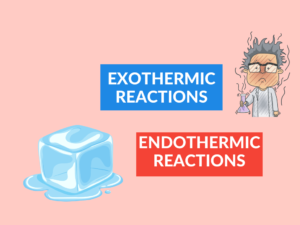What is Respiration?
Respiration is a biological process that takes place within living organisms. It involves the exchange of gases, primarily oxygen and carbon dioxide, to produce energy for the organism. Respiration can be classified into two types: aerobic respiration, which occurs in the presence of oxygen, and anaerobic respiration, which occurs in the absence of oxygen.
Examples of Respiration
Examples of respiration include:
- Human beings and animals inhaling oxygen and exhaling carbon dioxide through their lungs.
- Plants absorbing carbon dioxide from the atmosphere and releasing oxygen during photosynthesis.
- Bacteria breaking down organic matter in the absence of oxygen to produce energy.
What is Combustion?
Combustion is a chemical process that involves the reaction of a fuel or combustible substance with oxygen, resulting in the release of heat, light, and various combustion products. It is an exothermic reaction that typically produces carbon dioxide and water vapor as byproducts.
Examples of Combustion
Examples of combustion include:
- Burning of wood, coal, or natural gas to generate heat for cooking or heating.
- Automobile engines burning gasoline or diesel to produce energy for motion.
- Candles or oil lamps burning wicks to generate light.
Differences between Respiration and Combustion
| Difference Area | Respiration | Combustion |
|---|---|---|
| Process | Biological | Chemical |
| Occurrence | In living organisms | Involves both living and non-living entities |
| Reactants | Oxygen and fuel (glucose) | Oxygen and combustible substance (fuel) |
| Products | Energy, carbon dioxide, and water | Energy, carbon dioxide, and water (sometimes other byproducts) |
| Occurrence Type | Aerobic (oxygen present) and anaerobic (oxygen absent) | Always requires oxygen |
| Purpose | Energy production and gas exchange | Heat and light production |
| Location | Cellular level (mitochondria) | Can occur anywhere |
| Heat Production | Internal and regulated | External and unregulated |
| Endothermic/Exothermic | Endothermic | Exothermic |
| Controlled | Tightly regulated by the organism | Controlled externally through the supply of fuel and oxygen |
Conclusion:
In summary, respiration is a biological process occurring in living organisms, involving the exchange of gases to produce energy and gas exchange. On the other hand, combustion is a chemical process that occurs in both living and non-living entities, resulting in the release of heat, light, and various combustion products. Although there are some similarities between respiration and combustion, such as their reliance on oxygen, they differ in terms of process, reactants, products, occurrence type, purpose, and control.
People Also Ask:
1. What is the main purpose of respiration?
The main purpose of respiration is to produce energy for the organism through the exchange of gases, primarily oxygen and carbon dioxide.
2. What are the main products of combustion?
The main products of combustion are carbon dioxide and water vapor, although other byproducts may be produced depending on the fuel and conditions.
3. Can combustion occur without oxygen?
No, combustion requires an oxidizer, usually oxygen, to occur. In the absence of oxygen, combustion cannot take place.
4. How does respiration differ from photosynthesis?
Respiration involves the breakdown of organic compounds to produce energy and carbon dioxide, while photosynthesis is the process by which plants use sunlight to convert carbon dioxide and water into glucose and oxygen.
5. Are both respiration and combustion exothermic reactions?
Respiration is an endothermic process, meaning it requires energy input, while combustion is an exothermic process, releasing heat and light energy.


